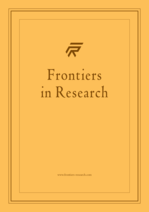Neuro-agile marketing: Optimizing strategy implementation via biometric feedback loops & predictive control systems
DOI:
https://doi.org/10.71350/3062192583Keywords:
Neuro-Agile marketing, biometric feedback loops, predictive control systems, agile marketing, consumer neuroscienceAbstract
Marketing stands at a critical crossroads: the imperative of speed inherently conflicts with the necessity of profound consumer insight, generating an “agility-insight gap” that diminishes strategic efficacy. Legacy agile approaches expedite campaign rollout but relinquish psychological depth in favor of superficial behavior that is poorly predictive of actual engagement. In contrast, traditional neuromarketing uncovers rich subconscious drivers but on a timescale too protracted for turbulent markets, with the effect that insight is often obsolete by the time of deployment. This manuscript presents Neuro-Agile Marketing (NAM) as the ultimate solution—a paradigm reconciling the iterative dynamism of agile execution with the precision of neuroscience through real-time biometrics (EEG, eye-tracking) and adaptive, reinforcement learning-based predictive control. NAM defines a closed-loop framework continually calibrating marketing stimuli to occult neural signatures—cognitive load, emotional valence, attentional focus—optimizing based on how consumers neurologically process content, not merely on what they say or do. This facilitates an unprecedented symbiosis with the subconscious topography of decision. By way of illustration, near-subliminal negative emotional reactions to packaging, detected in real-time via EEG during testing, can initiate rapid redesigns, preventing expensive failures—illustrating the revolutionary potential of NAM. Tapping this capability necessitates uncompromising ethical watchfulness: stringent frameworks enforcing algorithmic transparency, clear consumer opt-in, bias mitigation (with consideration for neurodiverse/cross-cultural cohorts), and equitable benefit distribution are essential. NAM’s full realization mandates an unprecedented convergence of marketing science, neuroscience, AI ethics, data engineering, and legal scholarship to pioneer standards, inclusive biometric baselines, explainable AI, and next-generation computational methodologies such as quantum ML. NAM embodies a fundamental revolution, closing the agility-insight gap to bring about marketing that is profoundly resonant, ethically centered, and authentically human-oriented by harnessing the real-time neurocognitive symphony that underlies choice.
Downloads
References
Ariely, D., & Berns, G. S. (2010). Neuromarketing: The hope and hype of neuroimaging in business. Nature Reviews Neuroscience, 11(4), 284–292. https://doi.org/10.1038/nrn2795
Beatty, J., & Lucero-Wagoner, B. (2000). The pupillary system. In J. T. Cacioppo, L. G. Tassinary, & G. G. Berntson (Eds.), Handbook of psychophysiology (2nd ed., pp. 142–162). Cambridge University Press.
Biamonte, J., Wittek, P., Pancotti, N., Rebentrost, P., Wiebe, N., & Lloyd, S. (2017). Quantum machine learning. Nature, 549(7671), 195–202. https://doi.org/10.1038/nature23474
Boucsein, W. (2012). Electrodermal activity (2nd ed.). Springer Science & Business Media. https://doi.org/10.1007/978-1-4614-1126-0
Conforti, I., & Gitto, S. (2021). Agile marketing strategies: A review of the literature and research agenda. Journal of Marketing Analytics, 9(3), 185–201. https://doi.org/10.1057/s41270-020-00098-0
Davenport, T. H., & Ronanki, R. (2018). Artificial intelligence for the real world. Harvard Business Review, 96(1), 108–116.
Dimoka, A., Banker, R. D., Benbasat, I., Davis, F. D., Dennis, A. R., Gefen, D., Gupta, A., Ischebeck, A., Kenning, P., Müller-Putz, G., Pavlou, P. A., Riedl, R., vom Brocke, J., & Weber, B. (2012). On the use of neurophysiological tools in IS research: Developing a research agenda for NeuroIS. MIS Quarterly, 36(3), 679–702. https://doi.org/10.2307/41703475
Ekman, P., & Rosenberg, E. L. (Eds.). (1997). What the face reveals: Basic and applied studies of spontaneous expression using the Facial Action Coding System (FACS). Oxford University Press.
Harmon-Jones, E., Gable, P. A., & Peterson, C. K. (2010). The role of asymmetric frontal cortical activity in emotion-related phenomena: A review and update. Biological Psychology, 84(3), 451–462. https://doi.org/10.1016/j.biopsycho.2009.08.010
Henrich, J., Heine, S. J., & Norenzayan, A. (2010). The weirdest people in the world? Behavioral and Brain Sciences, 33(2-3), 61–83. https://doi.org/10.1017/S0140525X0999152X
Kahneman, D. (2011). Thinking, fast and slow. Farrar, Straus and Giroux.
Kairouz, P., et al. (2021). Advances and open problems in federated learning. Foundations and Trends® in Machine Learning, 14(1–2), 1–210.
Kannan, P. K., & Li, H. A. (2017). Digital marketing: A framework, review and research agenda. International Journal of Research in Marketing, 34(1), 22–45. https://doi.org/10.1016/j.ijresmar.2016.11.006
Knutson, B., Rick, S., Wimmer, G. E., Prelec, D., & Loewenstein, G. (2007). Neural predictors of purchases. Neuron, 53(1), 147–156. https://doi.org/10.1016/j.neuron.2006.11.010
Lambrecht, A., & Tucker, C. (2019). Algorithmic bias? An empirical study of apparent gender-based discrimination in the display of STEM career ads. Management Science, 65(7), 2966–2981. https://doi.org/10.1287/mnsc.2018.3093
Ienca, M., & Vayena, E. (2021). Dual use in the 21st century: Emerging risks and global governance. Science and Engineering Ethics, 27(3), 1–13. https://doi.org/10.1007/s11948-021-00306-w
Plassmann, H., Venkatraman, V., Huettel, S., & Yoon, C. (2015). Consumer neuroscience: Applications, challenges, and possible solutions. Journal of Marketing Research, 52(4), 427–435. https://doi.org/10.1509/jmr.14.0048
Polich, J. (2007). Updating P300: An integrative theory of P3a and P3b. Clinical Neurophysiology, 118(10), 2128–2148. https://doi.org/10.1016/j.clinph.2007.04.019
Rigby, D. K., Sutherland, J., & Takeuchi, H. (2020). Embracing agile: How to master the process that’s transforming management. Harvard Business Review, 98(3), 40–50.
Shrestha, Y. R., Ben-Menahem, S. M., & von Krogh, G. (2019). Organizational decision-making structures in the age of artificial intelligence. California Management Review, 61(4), 66–83. https://doi.org/10.1177/0008125619862257
Siroker, D., & Koomen, P. (2013). A/B testing: The most powerful way to turn clicks into customers. Wiley.
Sutton, R. S., & Barto, A. G. (2018). Reinforcement learning: An introduction (2nd ed.). MIT Press.
Tavakoli, P., Agah, E., Kashani, A. T., & Rahmani, A. M. (2021). A comprehensive review of the application of deep learning in brain-computer interfaces: Challenges and future trends. Frontiers in Neuroscience, 15, 728908. https://doi.org/10.3389/fnins.2021.728908
Teixeira, T., Wedel, M., & Pieters, R. (2012). Emotion-induced engagement in internet video advertisements. Journal of Marketing Research, 49(2), 144–159. https://doi.org/10.1509/jmr.10.0207
Vaswani, A., et al. (2017). Attention is all you need. Advances in Neural Information Processing Systems, 30.
Vecchiato, G., Cherubino, P., Trettel, A., Babiloni, F., Maglione, A. G., & Graziani, I. (2014). Neuroelectrical correlates of perceived pleasantness and arousal evoked by the visualisation of commercial products: A neuromarketing study. Frontiers in Human Neuroscience, 8, 967. https://doi.org/10.3389/fnhum.2014.00967
Vecchiato, G., Cherubino, P., Trettel, A., & Babiloni, F. (Eds.). (2014). Neuroelectrical brain imaging tools for the study of the efficacy of TV advertising stimuli and their application to neuromarketing. Springer.
Wedel, M., & Pieters, R. (2008). A review of eye-tracking research in marketing. In Review of Marketing Research (pp. 123–147). Emerald Group Publishing Limited. https://doi.org/10.1108/S1548-6435(2008)0000004009
Wiener, N. (1948). Cybernetics: Or control and communication in the animal and the machine. MIT Press.
Yuste, R., Goering, S., Arcas, B. A., Bi, G., Carmena, J. M., Carter, A., ... & Wolpaw, J. (2017). Four ethical priorities for neurotechnologies and AI. Nature News, 551(7679), 159. https://doi.org/10.1038/551159a
Downloads
Published
How to Cite
Issue
Section
License
Copyright (c) 2025 Advanced Research Journal

This work is licensed under a Creative Commons Attribution 4.0 International License.





